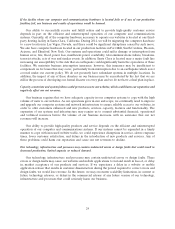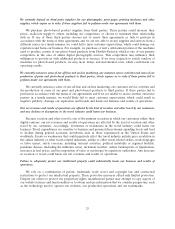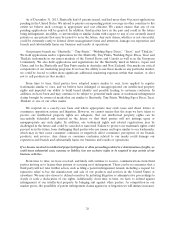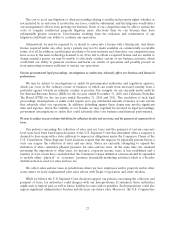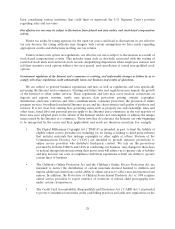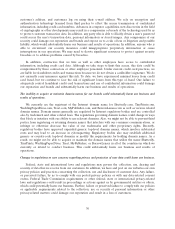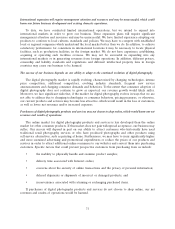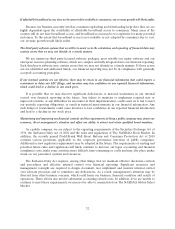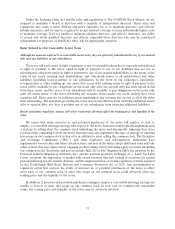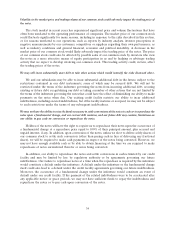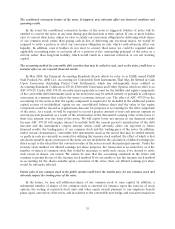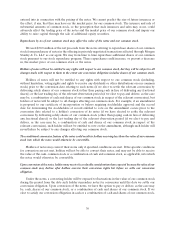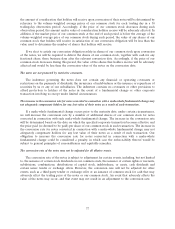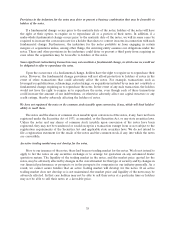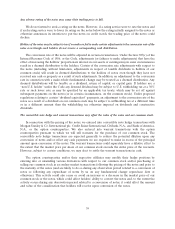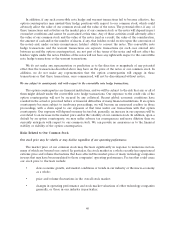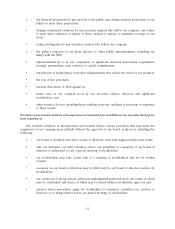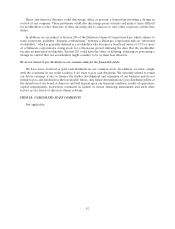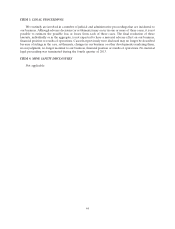Shutterfly 2013 Annual Report Download - page 36
Download and view the complete annual report
Please find page 36 of the 2013 Shutterfly annual report below. You can navigate through the pages in the report by either clicking on the pages listed below, or by using the keyword search tool below to find specific information within the annual report.Volatility in the market price and trading volume of our common stock could adversely impact the trading price of
the notes.
The stock market in recent years has experienced significant price and volume fluctuations that have
often been unrelated to the operating performance of companies. The market price of our common stock
could fluctuate significantly for many reasons, including in response to the risks described in this section,
or for reasons unrelated to our operations, such as reports by industry analysts, investor perceptions or
negative announcements by our customers, competitors or suppliers regarding their own performance, as
well as industry conditions and general financial, economic and political instability. A decrease in the
market price of our common stock would likely adversely impact the trading price of the notes. The price
of our common stock could also be affected by possible sales of our common stock by investors who view
the notes as a more attractive means of equity participation in us and by hedging or arbitrage trading
activity that we expect to develop involving our common stock. This trading activity could, in turn, affect
the trading prices of the notes.
We may still incur substantially more debt or take other actions which would intensify the risks discussed above.
We and our subsidiaries may be able to incur substantial additional debt in the future, subject to the
restrictions contained in our debt instruments, some of which may be secured debt. We will not be
restricted under the terms of the indenture governing the notes from incurring additional debt, securing
existing or future debt, recapitalizing our debt or taking a number of other actions that are not limited by
the terms of the indenture governing the notes that could have the effect of diminishing our ability to make
payments on the notes when due. Our existing credit facility restricts our ability to incur additional
indebtedness, including secured indebtedness, but if the facility matures or is repaid, we may not be subject
to such restrictions under the terms of any subsequent indebtedness.
We may not have the ability to raise the funds necessary to settle conversions of the notes in cash or to repurchase the
notes upon a fundamental change, and our current debt contains, and our future debt may contain, limitations on
our ability to pay cash on conversion or repurchase the notes.
Holders of the notes will have the right to require us to repurchase their notes upon the occurrence of
a fundamental change at a repurchase price equal to 100% of their principal amount, plus accrued and
unpaid interest, if any. In addition, upon conversion of the notes, unless we elect to deliver solely shares of
our common stock to settle such conversion (other than paying cash in lieu of delivering any fractional
share), we will be required to make cash payments in respect of the notes being converted. However, we
may not have enough available cash or be able to obtain financing at the time we are required to make
repurchases of notes surrendered therefor or notes being converted.
In addition, our ability to repurchase the notes and settle conversions in cash is limited by our credit
facility and may be limited by law, by regulatory authority or by agreements governing our future
indebtedness. Our failure to repurchase notes at a time when the repurchase is required by the indenture
would constitute a default under the indenture. A default under the indenture or the fundamental change
itself could also lead to a default under the credit facility agreements governing our future indebtedness.
Moreover, the occurrence of a fundamental change under the indenture would constitute an event of
default under our credit facility. If the payment of the related indebtedness were to be accelerated after
any applicable notice or grace periods, we may not have sufficient funds to repay the indebtedness and
repurchase the notes or to pay cash upon conversion of the notes.
34


